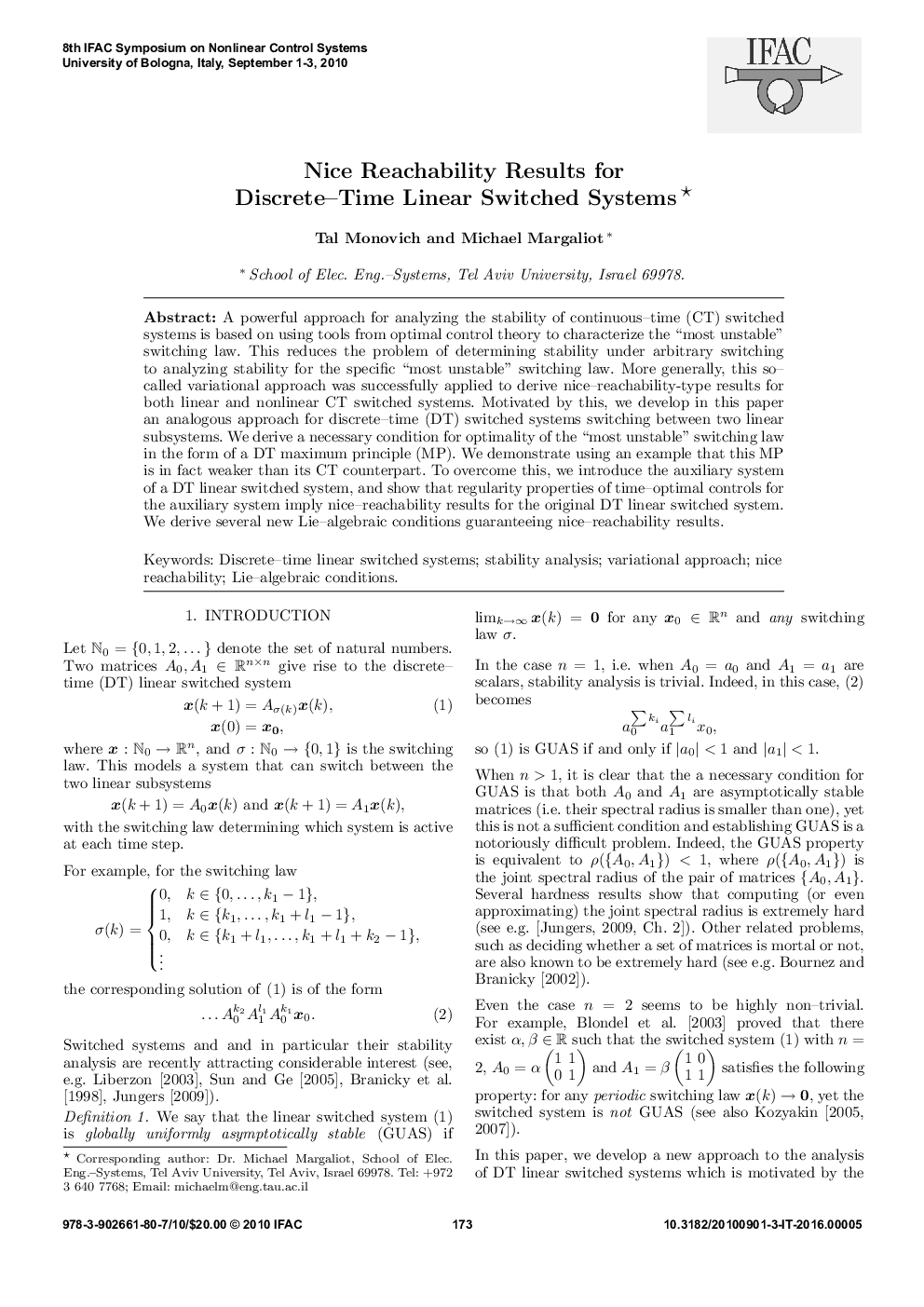| Article ID | Journal | Published Year | Pages | File Type |
|---|---|---|---|---|
| 717908 | IFAC Proceedings Volumes | 2010 | 6 Pages |
A powerful approach for analyzing the stability of continuous–time (CT) switched systems is based on using tools from optimal control theory to characterize the “most unstable” switching law. This reduces the problem of determining stability under arbitrary switching to analyzing stability for the specific “most unstable” switching law. More generally, this so–called variational approach was successfully applied to derive nice–reachability-type results for both linear and nonlinear CT switched systems. Motivated by this, we develop in this paper an analogous approach for discrete–time (DT) switched systems switching between two linear subsystems. We derive a necessary condition for optimality of the “most unstable” switching law in the form of a DT maximum principle (MP). We demonstrate using an example that this MP is in fact weaker than its CT counterpart. To overcome this, we introduce the auxiliary system of a DT linear switched system, and show that regularity properties of time–optimal controls for the auxiliary system imply nice-reachability results for the original DT linear switched system. We derive several new Lie–algebraic conditions guaranteeing nice–reachability results.
